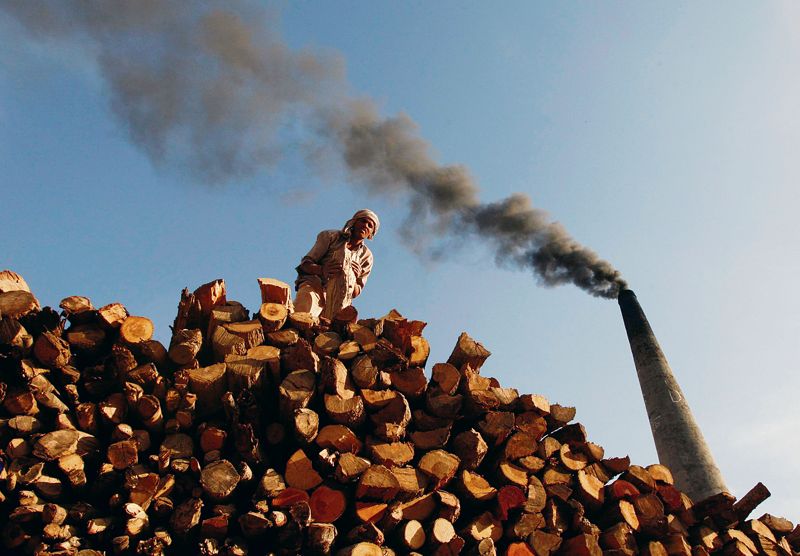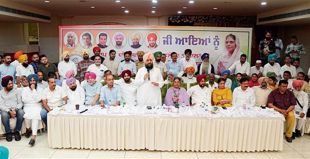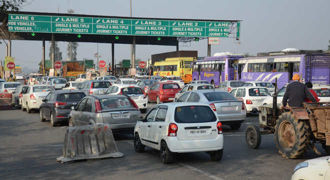
VIABLE: Captured CO2 can be used to produce graphene, carbon fibre or a new breed of synthetic hydrocarbon. Reuters
TK Arun
Senior Journalist
THE Synthesis Report of the Intergovernmental Panel on Climate Change, released on March 20, continues with a tradition that burdens developing countries rather than the developed ones with corrective action. If India’s rotating G20 presidency must yield anything tangible, it must be the undoing of this injustice. And the only way it can do this is by removing the stress from emission reduction and shifting focus to sucking carbon dioxide out of the atmosphere, known as carbon dioxide removal (CDR), not so much to store it underground as to use it for new, innovative ends, rather than just to make beer or soda fizzy.
The per capita emissions of southern Asia and Africa are tiny, whether estimated from the point of view of production or consumption, when compared to the emissions of North America or Europe.
Yet, these regions are supposed to more than pull their weight when it comes to reducing further emissions. Economic development and improvement in living standards do not take place without significant further use of energy, particularly in the industry. Thus, to bring down emissions, the regions can either forego development or invest massively in renewable energy, eschewing traditional sources of reliable base load, such as coal-fired power plants.
The trouble with renewable energy is intermittency. The sun does not shine round the clock. Nor does the wind blow all the time. A portion of the power that is produced when the sun shines and the wind blows must be stored and utilised when the renewable sources are not available. The storage can be in several forms, and all of them are expensive — giant arrays of battery storage, or pumped hydro, meaning the water is pumped up to an elevation, stored there and run down later to turn a turbine and generate power.
The latest big hope for solving the intermittency problem is hydrogen. If the power from wind and the sun is used to split water into its constituent elements of hydrogen and oxygen, the resultant hydrogen is called green hydrogen as very little carbon dioxide has been released in its production. This hydrogen can be stored, transported and burnt to produce heat, which can then be used to generate steam that drives a turbine, like in a normal thermal power generator.
But all storage is additional investment. The intermittency of renewable power adds to its cost immensely. When you feed solar or wind power into the grid, you have to make sure that the grid frequency remains unchanged, which calls for additional investment. But that is not the big cost factor. The world over, thermal power provides the base load, a part of which is backed down when wind or solar power is available in large quantities. Power tariff comes in two parts — the charge for the power generation plant being ready and available to generate power, and the cost of fuel that is burnt up to generate power. Regardless of whether you back down thermal power or not, the availability tariff has to be paid, and only the fuel cost is avoided. So, the cost of renewable power is not just the cost of its generation during the few hours when it is forthcoming, but also the cost of integrating it into the grid and the cost of keeping thermal capacity available, even when it is not utilised.
So, asking developing countries to reduce emissions by adopting renewable power is to impose a huge additional cost on them.
The more sensible solution is to suck out the carbon dioxide that has been injected into the atmosphere since the industrial revolution. The responsibility for this would fall obviously on the rich nations that account for the bulk of the cumulative accretion of CO2 in the atmosphere. Right now, this is deemed too expensive and is seen as a disincentive for the adoption of renewable power. This is a facile, self-serving excuse for de-emphasising CO2 removal as the most effective tool to fight climate change.
If the CO2 that is removed is simply buried underground, CDR becomes pure cost. If, however, the CO2 that is captured is used as the starting block for radically new processes, such as to produce graphene, carbon fibre or a new breed of synthetic hydrocarbon, removing carbon dioxide would suddenly become more than viable.
The basic thrust of climate research, its finances and allocation of research resources should be on this end.
However urgent and strenuous the climate action is now, some bit of damaging warming is underway and adaptation by way of crop selection, cultivation processes, reinforcing of coastlines against erosion and active measures to ward off the worst effects of adverse weather events is inevitable. That apart, the focus must shift to CO2 removal and its use.
While India’s permanent representative to the United Nations has routinely called for negative emissions on the part of the rich world, which is another way of describing CDR, it has not received the attention it deserves from the political leadership, which keeps harping on emission reduction and renewable energy.
While carbon dioxide removal is the responsibility of the rich world, it is an immense opportunity for a country like India, with its large and growing talent of technological manpower. The Joe Biden administration’s Inflation Reduction Act offers subsidies worth hundreds of billions of dollars to climate technology, including carbon capture and utilisation. This is likely to bring about a sea change in the priority it receives in the climate discourse. India should lead the discussion, rather than whine at the heels of those who lead.
Join Whatsapp Channel of The Tribune for latest updates.




























